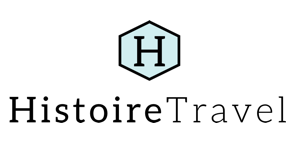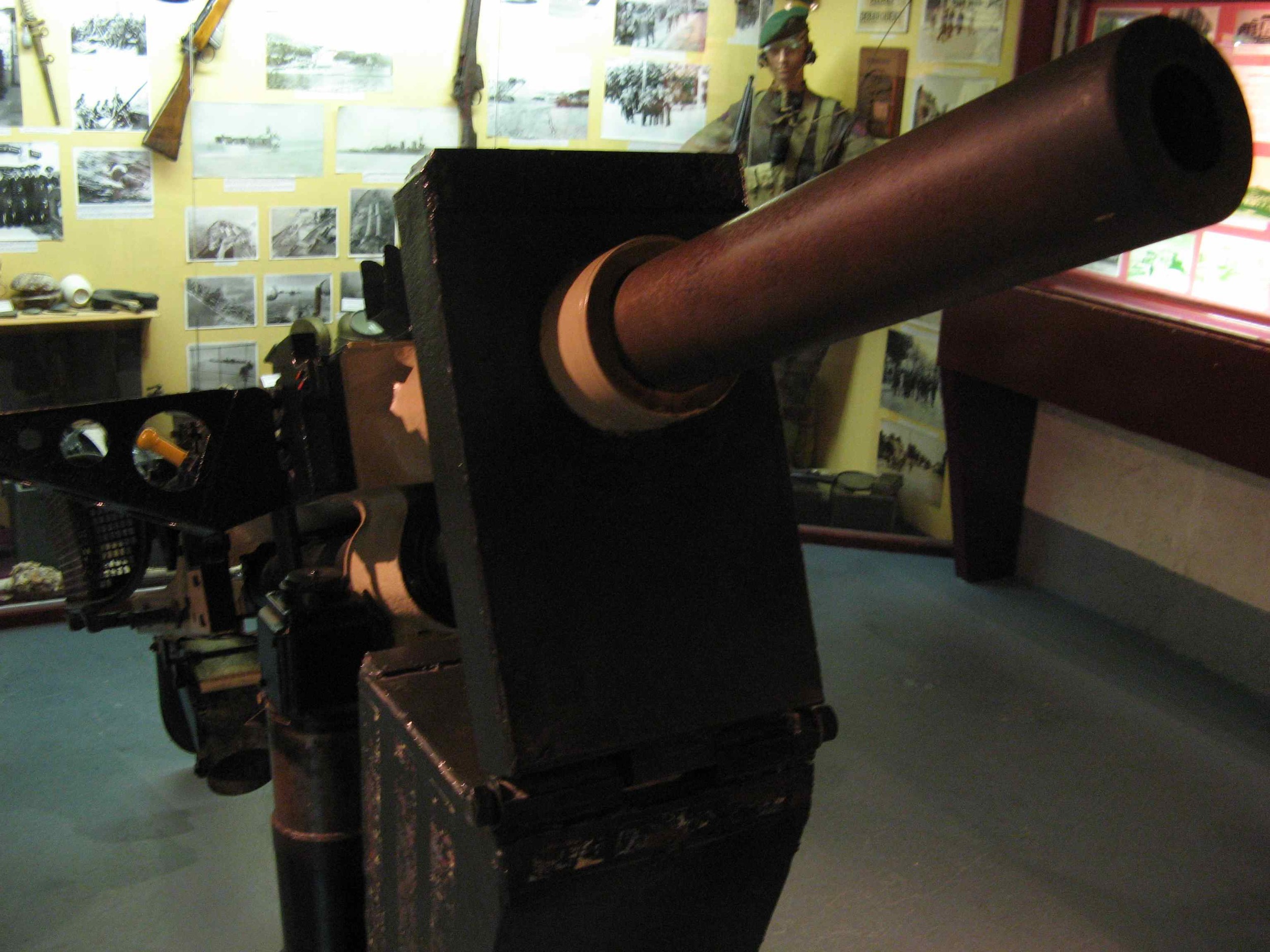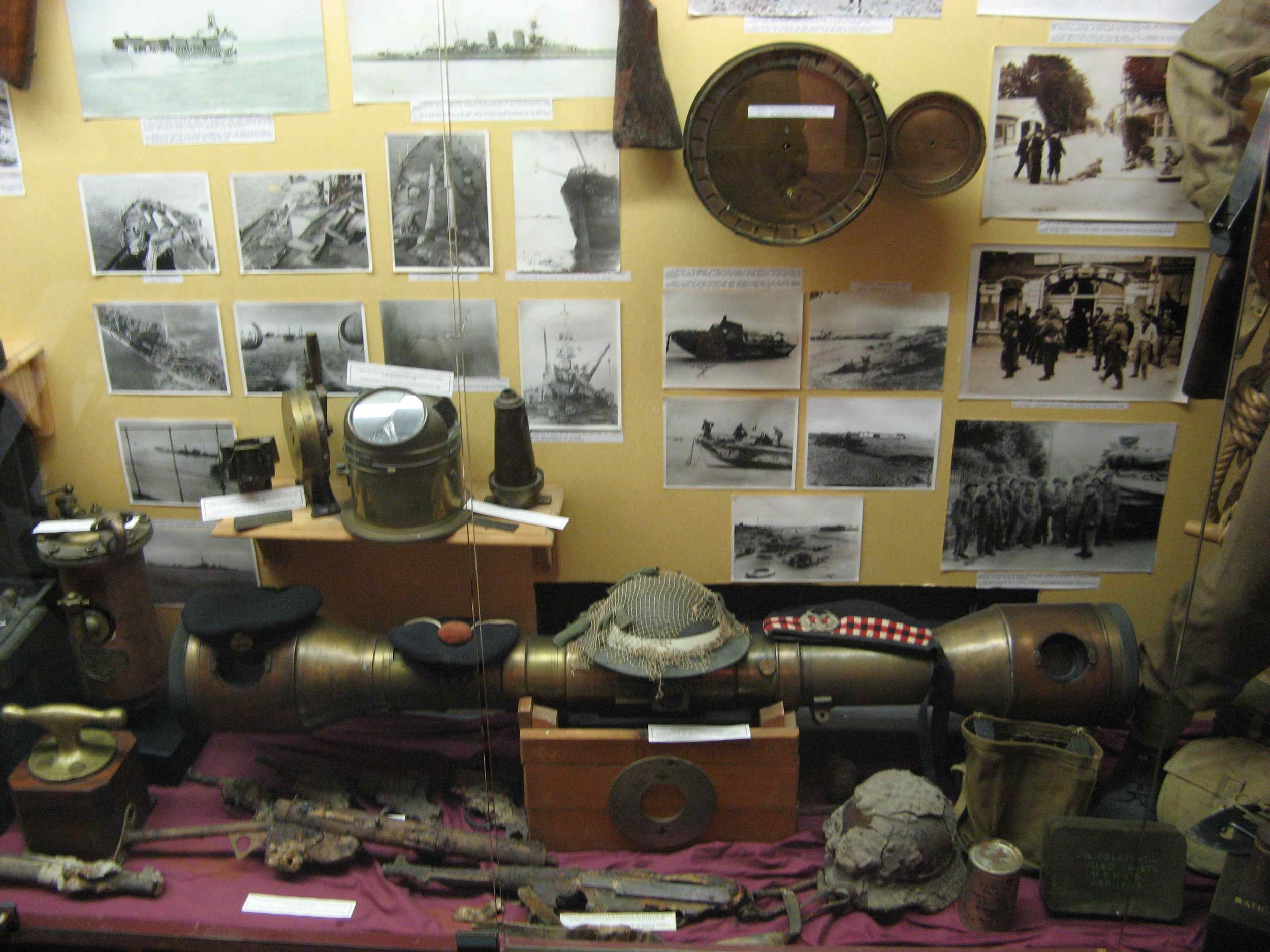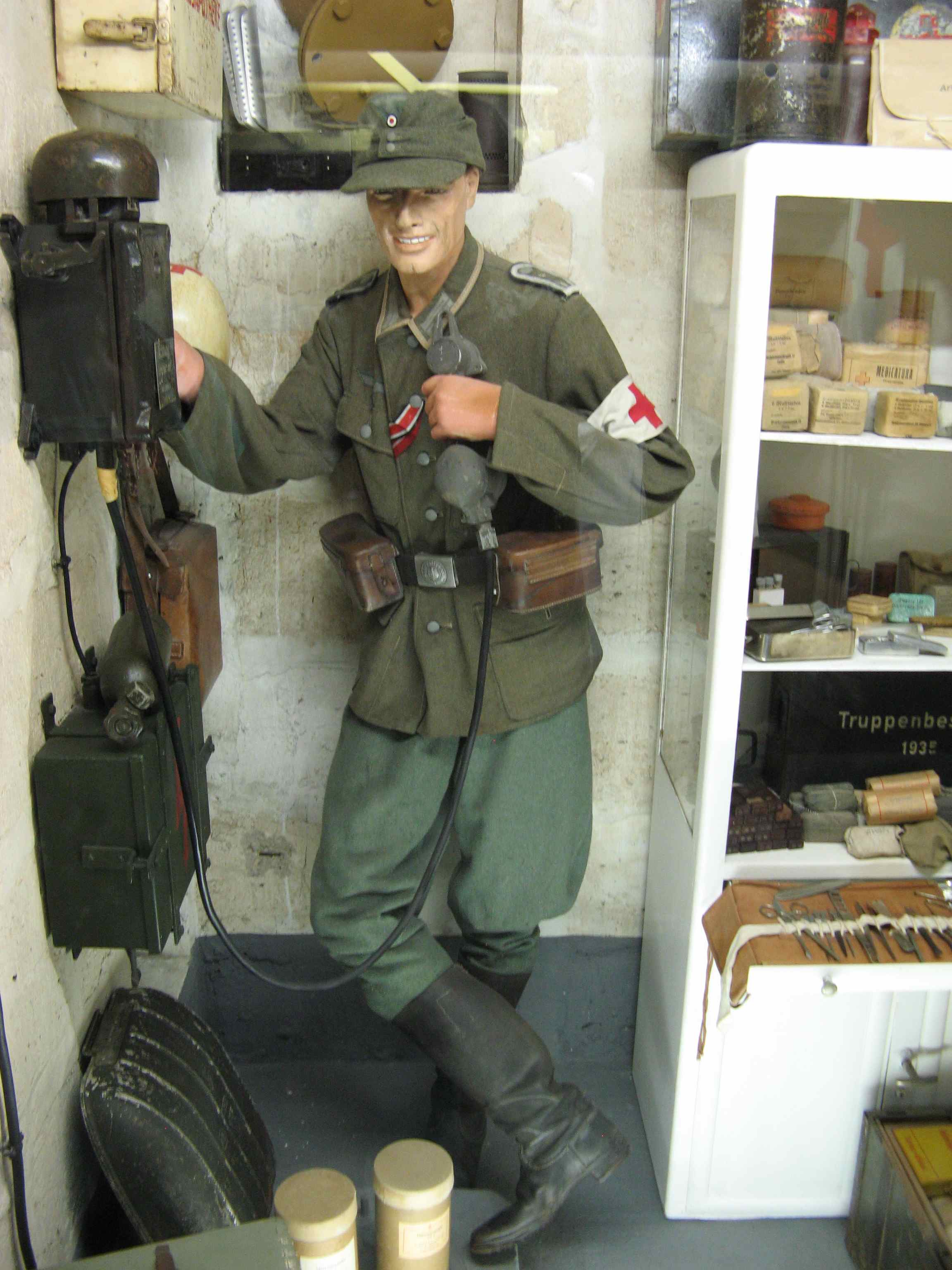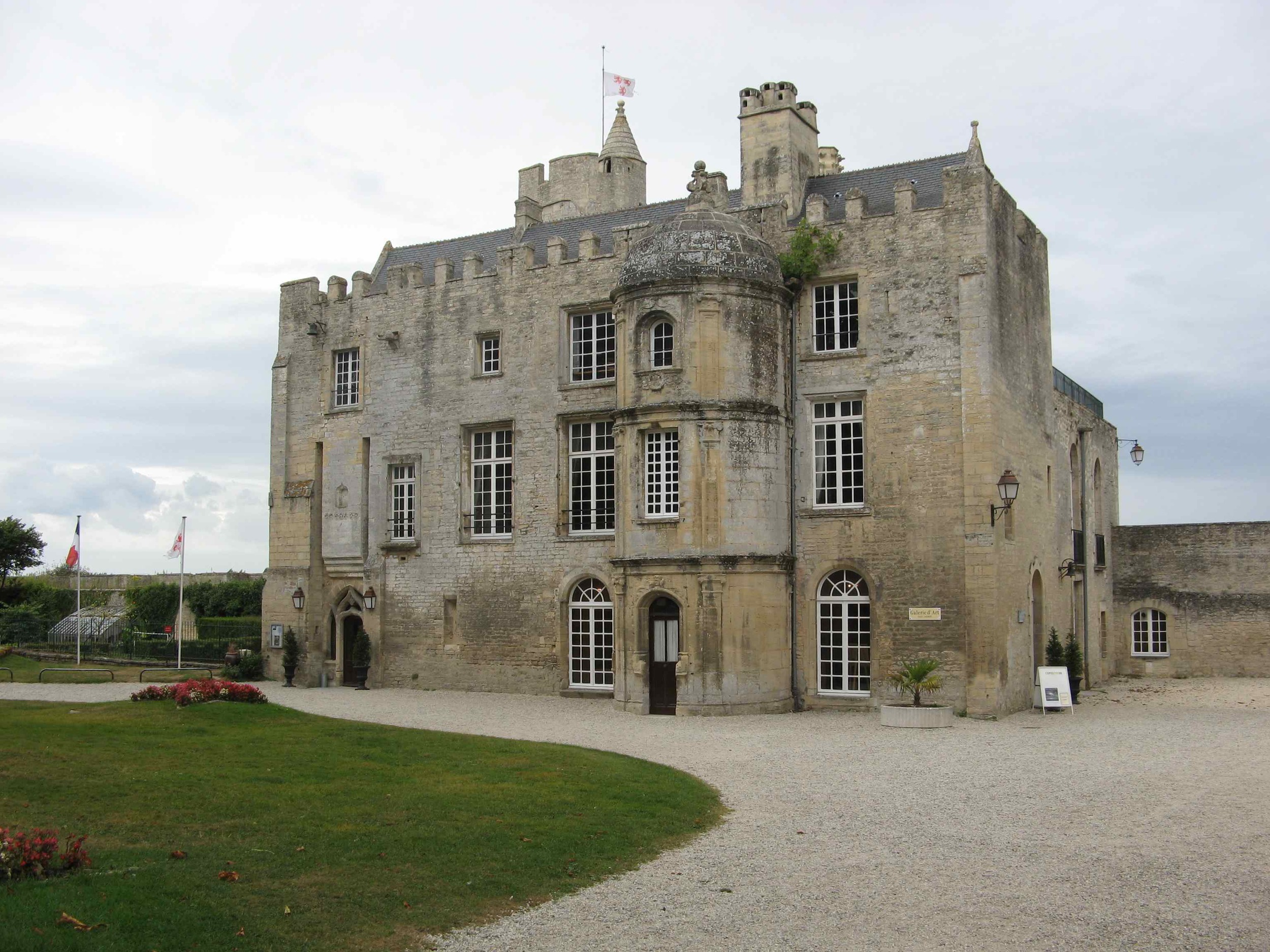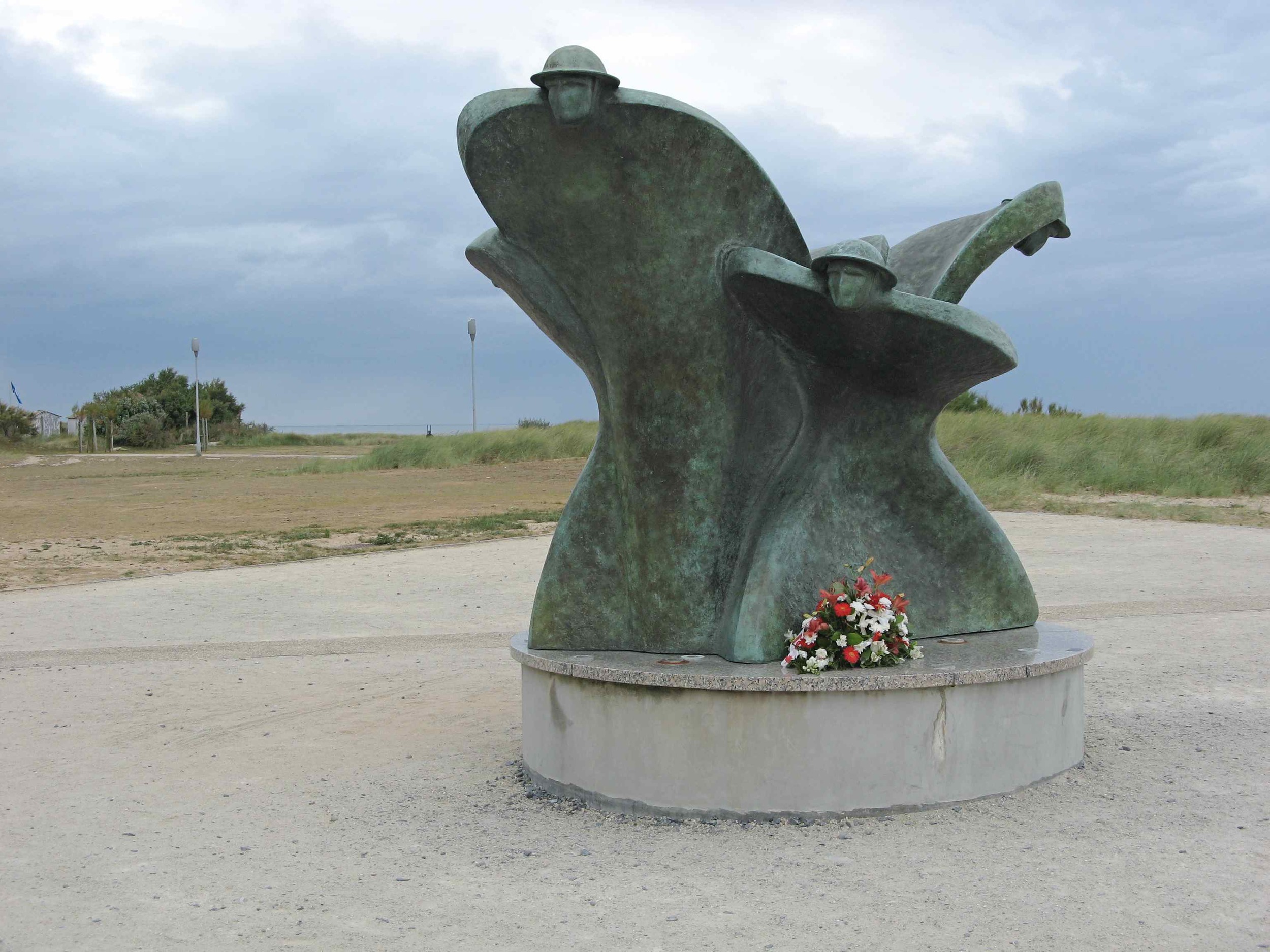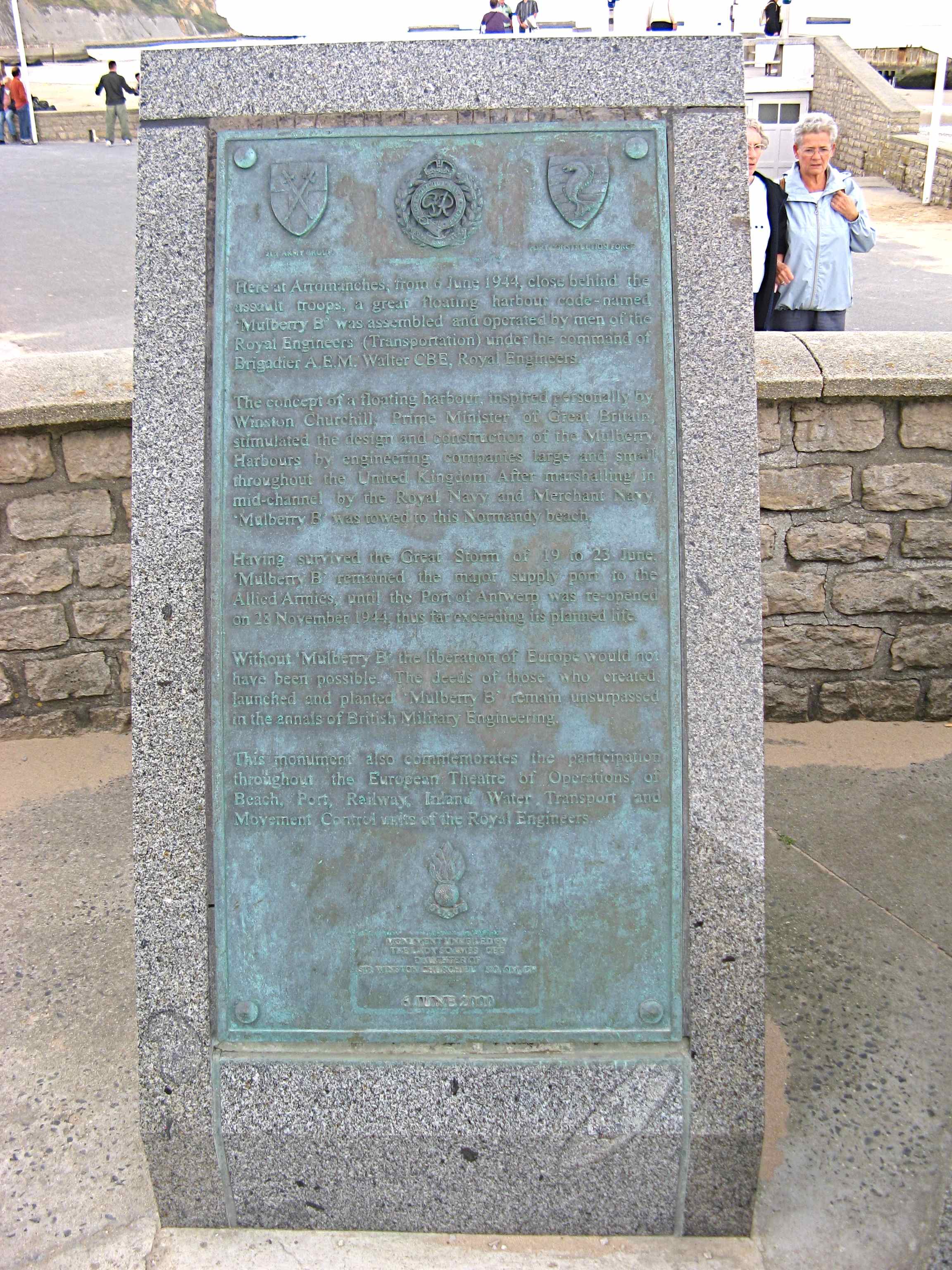After Juno, Henri was insistent that we see a bunker/museum called Le Grand Bunker - Atlantic Wall Museum in Ouistreham. It was late in the afternoon and the rain started to pick up. We were all exhausted and chilly, but his enthusiasm was enough to convince us to go.
By the time we arrived, the museum was near closing. After we took a look at the tanks and stuff in the front, we entered into a gift shop, quickly bought our tickets, and pushed through a turnstile.
As we walked down a deserted hallway, a small sign in explained the bunker’s story.
The 52-foot (17 meter) concrete tower was on prime real estate surrounded by town buildings and housing just behind Sword Beach. It served as a command center for the German batteries on the Orne estuary.
On D-Day, a British shell hit the bunker and crippled its ability as a command center. The Germans inside, however, were able to stave off Allied commandos.
On June 9th, Bob Orrell, a lieutenant in the Royal Engineers, and three other men carried out orders to take the bunker.
Their main obstacle was a huge, armored door.
First, they tried to blast it open using six pounds of dynamite on the upper hinges. That didn’t work.
Next, they used a sledgehammer and a mine bar. That didn’t work either.
It eventually took ten pounds of explosives to break through the door.
As the men walked into the bunker, voice called down, in a flawless English accent, from one of the floors above, “It’s alright, Tommy, you can come up.”
“Bugger off, you come down!” answered Orrell
With nowhere to run, 51 German soldiers and two officers filed down and surrendered to Orrell and his three men.
The bunker is now laid out as it was on D-Day, but there is also a ton of information about the Atlantic Wall throughout the rooms.
Maybe it was the sound of the rain and the fact that we were the only people wandering through, but I found the bunker quite eerie.
I don’t think the mannequins helped.
That’s not to say that I didn’t enjoy it, of course. I loved it. If it hadn’t have been for Henri, we never would have come here.
My favorite part was stepping into the lookout/rangefinder room at the top of the tower and really realizing just how much they could see from there. It was nearly a perfect 360 degree panorama.
Just as we were able to reach to top of the bunker and take a good look around, we had to leave.
Back in the car, we three exhausted, yet satisfied, tourists thought the day was over.
But Henri had other plans. Henri always had other plans. Better plans.
And just like that, we were off to Honfleur for dinner.
As usual, it was a harrowing drive. We toured a roundabout at great speed for what felt like an hour as Henri tried to remember which exit to take. I imagine the Vomit Comet produces a similar effect on the ole stomach.
When we arrived, as soon as Henri put the car in park, he was off. This was, apparently, an important mission. A food mission. He stormed through the streets too fast for us to take any good pictures or see any real sites. But we got enough of a look to realize that this was a town that we wanted to see again.
We ate at a tiny, packed place on the harbor. Since we had an early flight the next morning, none of us were adventurous enough to eat anything too exciting.
Henri, on the other hand, ordered a huge seafood platter. I recognized mussels and shrimp. Everything else came in shells that were entirely new to me. I tried to figure out what they were and I filed most of them under: “I don’t know how I feel about putting that in my mouth but I might try it once.” He loved everything.
We were well into the evening when we got back to the car and started to make the long trek back to Paris. It was after 1 am when got back to the city.
The streets were very quiet. It felt like it was just us and the streetlights awake.
Henri, bolstered by a quick espresso stop earlier and his omnipresent zest for both adventure and talking, turned to us and asked, with genuine excitement, if we wanted him give us a tour of Paris.
"Right now?!?"
"Right now."
We sleepily declined. It would be a miracle if we got even two hours of sleep since we still had to pack and be ready to leave for the airport at 6 o'clock. He dropped us off at the hotel and we said our goodbyes.
Looking back now, I wish we had let him take us around. Who needs sleep when can speed through Paris with an eccentric French tour guide at dawn?
So that, in six parts, is the story of our day trip to Normandy. Henri actually stole the show. I think it's really the story of the time we let a kooky tour guide with a barely street legal car and a penchant for raw milk take us for an amazing ride through space and time.
I wouldn’t change any part of it for anything.
